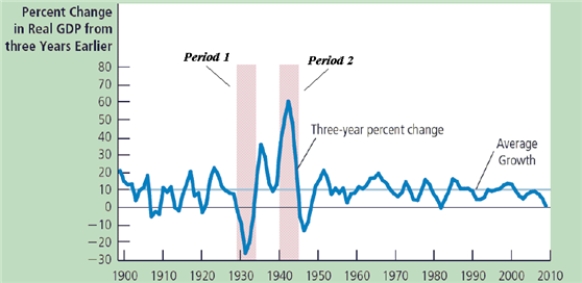Figure 33-12. 
-Refer to Figure 33-12.Explain how the aggregate demand and aggregate supply model changed during periods 1 and 2.
Definitions:
GDP
The aggregate value, in monetary or market terms, of all end-use goods and services produced domestically within a specific period is what constitutes the Gross Domestic Product.
Inflation
The speed at which the overall price level of goods and services increases, thereby diminishing the buying power.
Real GDP
Gross Domestic Product adjusted for inflation, providing a more accurate reflection of an economy's size and how it's grown over time.
Economic Welfare
The overall well-being and standard of living of people within an economy, often measured by indicators like income, health, and education.
Q41: Other things the same, as the price
Q99: The recessions of the 1970s are often
Q105: Which of the following tends to make
Q247: Menu costs help explain<br>A)sticky-price theory.<br>B)misperceptions theory.<br>C)sticky-wage theory.<br>D)All
Q280: Which of the following is correct?<br>A)Economic fluctuations
Q287: Most economists believe that in the long
Q300: According to liquidity preference theory, the money-supply
Q307: Which of the following did not happen
Q417: Which of the following shifts aggregate demand
Q534: In the last half of 1999, the